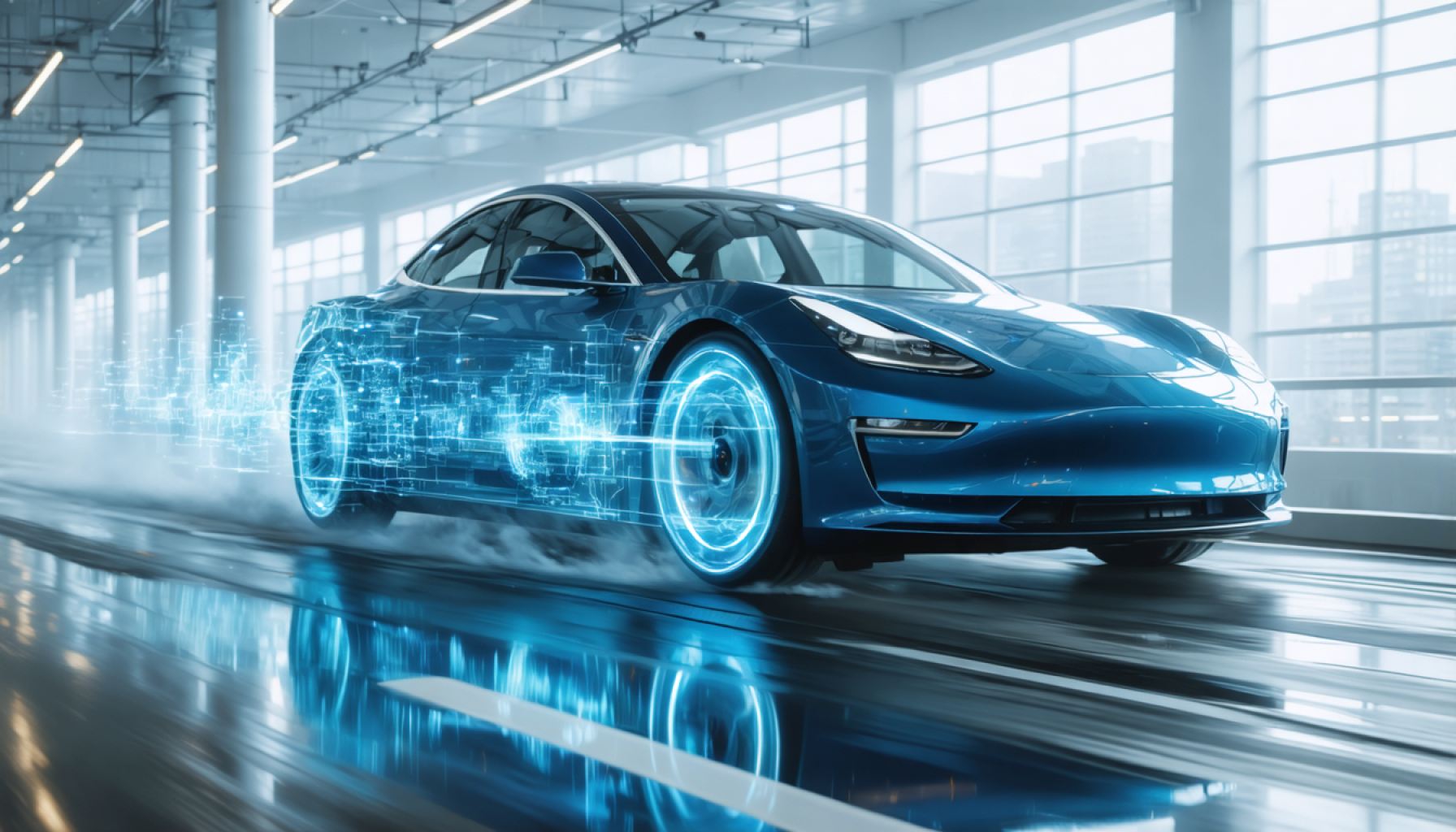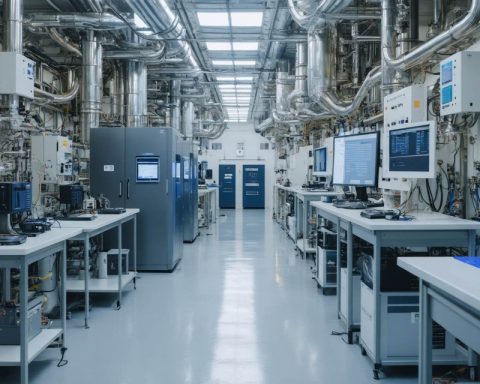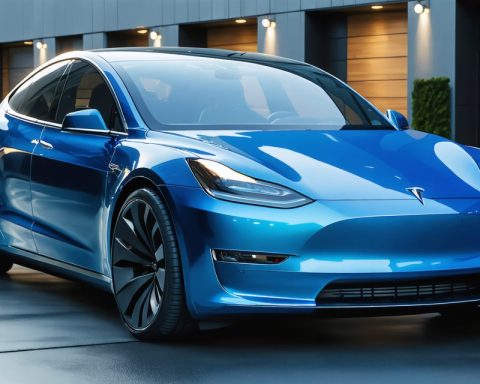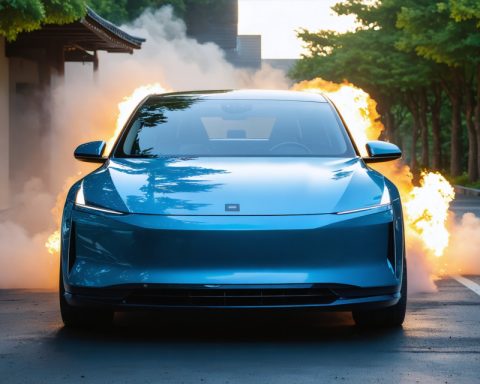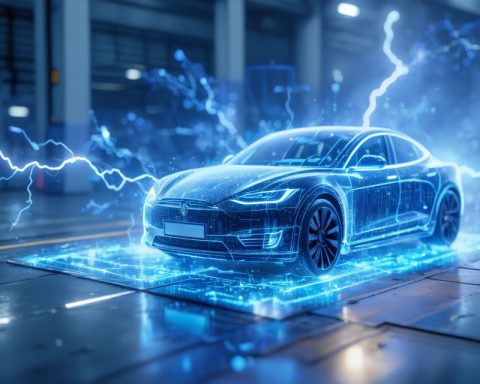- Electric vehicles (EVs) feature regenerative braking, which enhances energy efficiency and driving experience.
- This system captures kinetic energy during braking and converts it into usable power, extending the EV’s range.
- Regenerative braking also contributes to a smoother, more responsive drive akin to manual downshifting.
- Besides improving energy efficiency, this technology reduces traditional brake wear and lowers the carbon footprint of EVs.
- Future advancements may allow for customizable braking power, optimizing performance and energy recovery.
- Regenerative braking revolutionizes driving mechanics, advancing EVs as pioneers in sustainable transportation.
Electric vehicles (EVs) have captured the global spotlight, drawing attention with their sleek designs and promise of a cleaner future. Yet, lurking beneath the surface of these eco-friendly machines is a groundbreaking innovation—regenerative braking—that quietly elevates the driving experience while boosting energy efficiency.
Picture yourself cruising down a winding road on a sunny day, the electric hum of your vehicle barely audible over the gentle breeze. As your EV glides downhill, an extraordinary process unfolds under the hood. Instead of the traditional braking system, where kinetic energy dissipates as heat, regenerative braking seizes the opportunity to capture and convert energy back into usable power.
When drivers apply the brakes in an EV, the vehicle’s electric motor reverses its role, morphing into a generator. This ingenious system not only slows the car but also channels energy back into the battery, extending the vehicle’s range—a silent superpower working tirelessly to save energy.
Beyond the energy efficiency, this technology offers a smoother, more responsive drive. The subtle deceleration feels natural, akin to manually gearing down. EV enthusiasts often praise this as a game-changer, transforming everyday commutes into opportunities for energy conservation.
While regenerative braking’s impact on extending battery life and reducing wear and tear on traditional braking systems continues to win fans, its broader environmental benefits are equally compelling. By maximizing energy recuperation, EVs take a significant step toward lowering their carbon footprint, reinforcing their role as trailblazers in sustainable transportation.
As EV technology evolves, expect refinements that enhance regenerative systems’ precision and efficiency. Emerging innovations might allow drivers to tailor braking power to their preferences, optimizing both performance and energy recovery.
The takeaway? Regenerative braking is not just a feature—it’s a revolution in the fundamental mechanics of driving. Every mile you drive isn’t just taking you closer to your destination, it’s part of a larger journey toward sustainability. Embracing this technology means participating in a quiet revolution transforming how we harness energy and preserve the environment. In the world of EVs, it’s the unseen heroes that are making the most profound impact.
Unleashing the Future: Regenerative Braking in Electric Vehicles Explained
Electric vehicles (EVs) continue to captivate the world with their promise of sustainability and innovation. Central to their appeal is regenerative braking, a feature that not only enhances energy efficiency but also transforms the driving experience. Let’s delve into the nuances of this technology that weren’t fully explored in the source material.
Understanding Regenerative Braking
Regenerative braking is at the heart of EV efficiency. When you press the brake pedal in an electric vehicle, the electric motor switches roles to become a generator. Instead of wasting kinetic energy as heat (like traditional brakes), it captures this energy, converting it back into electrical power that recharges the battery. This process extends the vehicle’s range and enhances fuel economy.
Real-World Benefits and Use Cases
1. Extended Battery Life: By reducing reliance on mechanical brakes, regenerative braking decreases wear and tear, potentially extending the lifespan of your vehicle’s brakes and battery.
2. Smoother Driving Experience: Many EV drivers appreciate the natural deceleration, similar to downshifting in a manual vehicle, leading to a more intuitive driving feel.
3. City Driving: Regenerative braking shines in stop-and-go traffic, constantly recapturing energy that would otherwise be lost—a perfect match for urban environments.
4. Downhill Driving: On declines, regenerative braking can prevent over-acceleration by converting gravitational energy back into battery power, providing a safety net that boosts efficiency.
Emerging Innovations and Market Trends
The regenerative braking system is set to evolve further. Upcoming enhancements could allow drivers to adjust the braking strength to suit their preferences or road conditions, further optimizing performance and energy recovery.
The EV market currently shows exponential growth, with major players like Tesla, Nissan, and Chevrolet incorporating advanced regenerative systems in new models. According to expert predictions, the adaptation of more efficient regenerative systems will lead to a further increase in EV adoption.
How-To: Maximizing Regenerative Braking Efficiency
1. Use Driving Modes: Eco and regenerative-focused modes can optimize energy recovery.
2. Plan Route Ahead: Anticipate stops to maximize regenerative braking’s benefits, reducing abrupt brake usage.
3. Understand Your EV: Familiarize yourself with your vehicle’s specific regenerative system for best results. Check manufacturer guides for tips on optimizing energy recuperation.
Challenges and Limitations
While regenerative braking is revolutionary, it does have limitations. At very low speeds, regenerative braking alone may not suffice, necessitating traditional brakes. Additionally, steep learning curves can occur as new drivers adjust to the sensation of regenerative braking.
Security, Sustainability, and the Environmental Impact
A primary advantage of regenerative braking is its contribution to sustainability. By minimizing energy waste, EVs reduce emissions and help create a cleaner, more sustainable environment. This aligns closely with global carbon reduction goals set by organizations like the Paris Agreement.
Insights and Predictions
The future of regenerative braking is bright as it integrates with autonomous driving technologies. Self-driving cars could use predictive analytics to maximize energy recovery, choosing optimal braking points that humans may overlook.
Conclusion and Quick Tips
Regenerative braking isn’t just a novel feature; it’s a pivotal component in the transition to sustainable transport. By understanding and utilizing this system effectively, drivers can optimize their driving habits, contribute to environmental sustainability, and enjoy a smoother ride.
Quick Tips:
– Familiarize yourself with your car’s regenerative settings.
– Practice anticipating stops to make the most of regenerative braking.
For more insights into electric vehicles and sustainable technologies, visit Tesla and Nissan.
